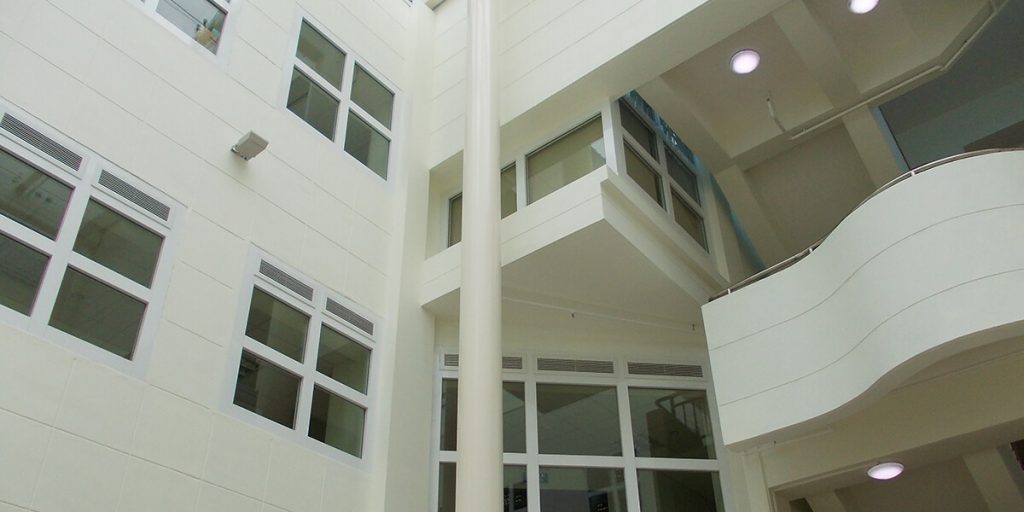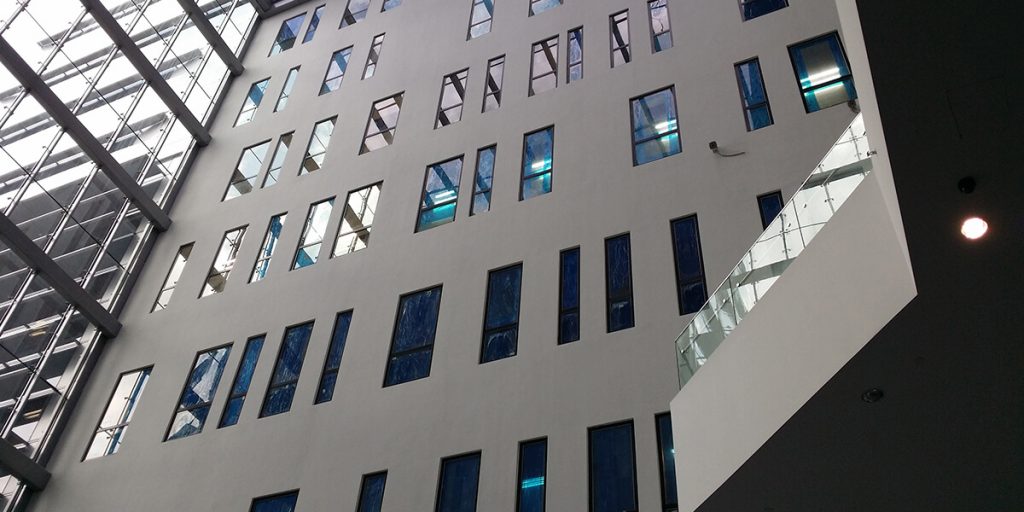Fire prevention is the fundamental aspect of building safety, and one of its crucial aspects is passive fire protection. Passive fire protection systems are essential for enabling building occupants to safely leave the premises, giving firefighters more time to put out a fire. Among the passive fire protection systems comes fire rated glass, which stands out as a versatile and effective solution. Let us take a closer look at its function, main characteristics, uses, benefits and standards.
Defining fire rated glass
Also called fire-resistant glass or fire-protective glass, fire rated glass is specifically engineered and put through testing to ensure it can endure the extreme heat and pressure produced during a fire. It is designed to contain smoke and fire by creating a transparent barrier that lets light and visual communication through while halting the spread of flames and hot gases.

Key features of fire rated glass
Fire resistance: The primary function of fire-rated glass is to maintain its integrity and act as a barrier against the extreme temperatures of a fire. It is manufactured using multiple layers of specially treated glass, interlayers, and fire-resistant seals. These components work together to provide various levels of fire resistance, typically measured in minutes or hours.
Impact safety: Fire rated glass is designed to resist the impact of thermal shock, preventing it from shattering and creating hazardous fragments during a fire. This feature ensures that the glass remains intact, maintaining the integrity of the fire barrier and allowing occupants and firefighters to assess the situation and execute evacuation or firefighting strategies.
Smoke control: In addition to fire resistance, fire rated glass also offers a degree of smoke control. It acts as a barrier against the spread of smoke, limiting its movement between compartments and allowing for safer evacuation routes.
Application of fire rated glass
Fire rated windows and doors: Fire rated glass finds extensive use in windows and doors, enabling the provision of natural light and visibility in areas requiring fire separation. This is particularly important in buildings where compartmentalisation is a priority, such as hospitals, schools, commercial buildings and high-rise structures. Fire rated windows and doors provide occupants with a safe means of egress while facilitating communication and coordination during an emergency.
Interior partitions and enclosures: Fire rated glass is commonly employed in interior partitions and enclosures to create fire rated barriers within a building. This allows for the division of spaces into fire compartments while maintaining visual connectivity and an open environment. Fire rated glass partitions are often used in office spaces, public buildings and atriums where aesthetics, natural light and fire safety are equally important.
Fire rated curtain walls: Curtain walls are non-structural exterior building envelopes that provide insulation, weather protection and aesthetic appeal. By incorporating fire-rated glass within curtain wall systems, building designers can create visually pleasing facades while ensuring fire safety. This application is especially relevant in high-rise buildings, where fire rated curtain walls help contain fires within a limited area, preventing vertical fire spread.
Skylights and roof glazing: Fire rated glass can also be used in skylights and roof glazing systems. These applications allow for the ingress of natural light while ensuring fire safety and compliance with building codes. Fire rated skylights are essential in buildings with large open spaces, such as shopping malls, airports and sports complexes, where the penetration of natural light from above is desired.

Benefits and standards of fire rated glass
The inclusion of fire rated glass in passive fire protection systems offers several benefits:
Life safety: Fire rated glass helps protect lives by providing a safe means of egress during emergencies. Its transparent nature allows occupants and firefighters to assess the situation, coordinate rescue efforts and execute evacuation plans effectively.
Aesthetics and design freedom: Fire rated glass comes in various forms, including clear, tinted, wired and ceramic glass. This enables architects and designers to incorporate fire safety measures without sacrificing aesthetics and design intent.
Sound insulation: Fire rated glass can provide sound insulation properties, contributing to the acoustic comfort of a building. This is particularly beneficial in spaces where noise reduction is essential, such as hospitals, educational institutions and hotels.
Fire-rated glass must meet stringent industry standards to ensure its performance and reliability. These standards vary across regions but commonly include testing methodologies, fire resistance ratings, impact safety requirements and smoke control criteria. Compliance with these standards is crucial to guarantee the effectiveness of fire rated glass in passive fire protection systems.
Do not compromise your safety, use fire rated glass
Fire rated glass is a valuable asset in passive fire protection systems. Its fire resistance, impact safety and smoke control features make it an essential component in buildings where fire safety is of utmost importance. By incorporating fire rated glass, building designers can achieve the delicate balance between fire safety, natural light, visibility, aesthetics and design freedom. As technology advances, fire rated glass continues to evolve, offering enhanced protection and contributing to the overall safety and well-being of building occupants. Compliance with industry standards is essential to ensure the reliability and performance of fire rated glass.
As the construction industry continues to prioritise safety, fire rated glass will continue to play a significant role in passive fire protection systems. Architects, designers and building professionals should be aware of the various applications, benefits and standards associated with fire rated glass to ensure the implementation of effective fire safety measures.

